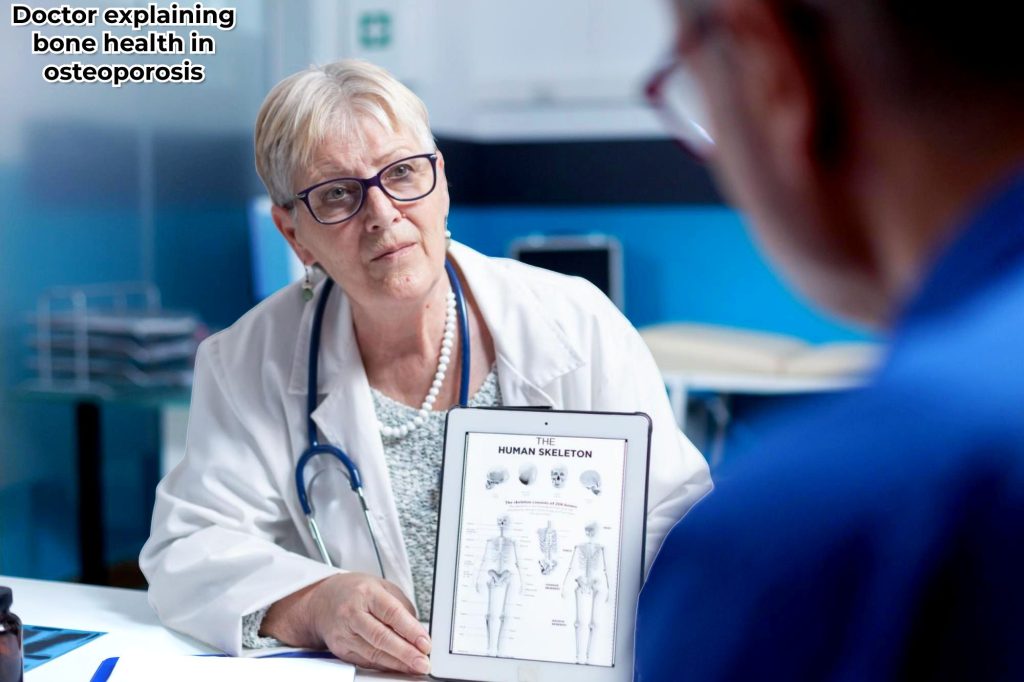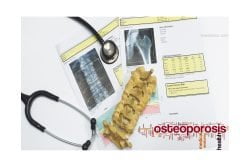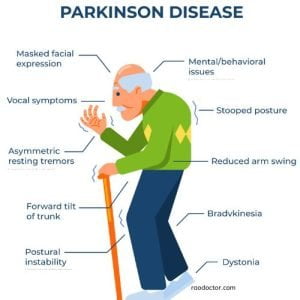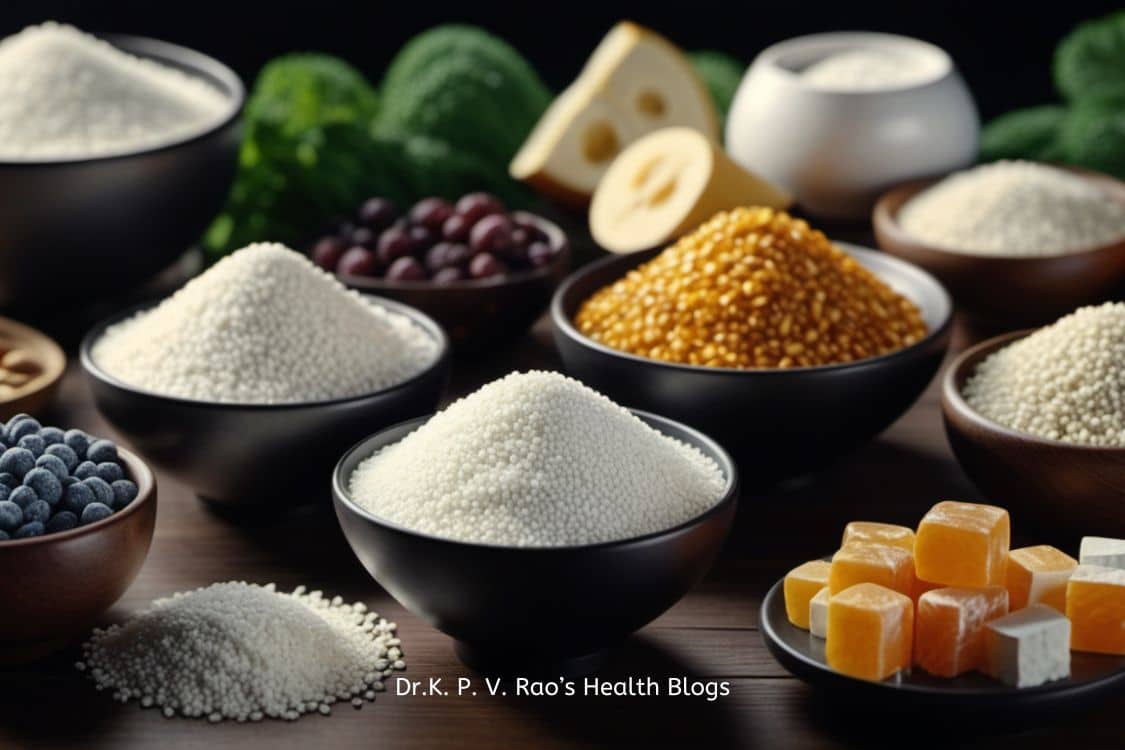
Image Source: FreePik Designed on Canva Pro
Listen to this article, click the audio button below-
Table of Contents
Introduction
Osteopenia, osteoporosis and osteomalacia are all common conditions that negatively impact bone health. Osteopenia and osteoporosis are considered pre-fracture states because they weaken the bones to a point where they’re more prone to fractures.
Osteomalacia is a less well-known bone condition, but it can be just as serious as osteopenia or osteoporosis. This article explores what these conditions are, their risk factors and investigations, and how you can prevent them from happening to you.
Why is bone health so important?
4 weeks back, an elderly lady, aged 76 years, visited me with a complaint of swelling of left hand and inability and pain in moving her left arm. She was grossly underweight- about 35 kg, and I was pretty sure her diet was also very poor. She barely ventured out of her house- she was a widow. She had a history of a fall on the left shoulder 45 days back.
On examination, I found out that she has dislocation of the left shoulder, probably causing swelling of her left hand due to her blood vessels getting compressed due to the dislocation.
An X-ray study of her left shoulder revealed what I suspected- a fracture-dislocation of the upper arm bone, the humerus. Moreover, the X-ray also revealed that her bone was highly porous- meaning she had calcium deficiency in her bones. This lady had severe osteoporosis, so much so that a mere fall caused a fracture!
This case prompted me to write this article, because as we age, we are more weight conscious and start avoiding many food items, just to maintain our weight.
Gradually, this has an adverse effect on our bones as they lose bone density and become brittle. This brittle bone then is the reason why more fractures happen easily in old age.
This is just one example that I have shared with you. There are many more to suggest that you bones must be weak- just press a finger on your shine bone- if it pains, you may be having calcium deficiency that will cause Osteopenia eventually, if not treated.
What is osteopenia?
Osteopenia is a pre-fracture state where bone mineral density, or BMD, is reduced, but not to the point that it’s considered osteoporosis. Bone mineral density is a measure of the strength of the bones.
In osteopenia, bone mineral density is reduced by 10-19%, while in osteoporosis, bone mineral density is reduced by 20% or more. Osteopenia and osteoporosis are both risk factors for fractures and can lead to osteomalacia if left untreated.
Osteopenia is most common in post-menopausal women and can affect both men and women of any age.
What is osteoporosis?
Osteoporosis is a serious and chronic bone disease that leads to weak bones. It can cause fragile bones that are more likely to break, usually in the spine, wrist, hip and ribs.
Bones are living tissue that continuously change throughout your life as old bone tissue is replaced with new tissue made by cells called osteoblasts. Bone growth occurs at the ends of long bones and in the shafts of short bones such as those found in the wrist and ankles (wrist-ankle joints ).
Osteoporosis is a disease that causes bones to become thin and fragile.
It affects one in five women and one in 10 men over the age of 50, and the risk increases with age. Osteoporosis is often called a silent disease because there are usually no symptoms until a fracture occurs, often without any apparent cause.
What is osteomalacia?
Osteomalacia is a softening of the bones often caused by Vitamin D deficiency. Vitamin D is important for healthy bones, and most people get enough from exposure to the sun.
People with darker skin need more time in the sun to make the same amount of Vitamin D as lighter-skinned people.
If you have osteomalacia, your body isn’t able to absorb enough Vitamin D. This can cause your bones to become softer than normal, leading to increased risk of fractures.
Risk Factors for Osteopenia, Osteoporosis and osteomalacia
All three conditions are associated with a higher risk of fractures, especially in the hip, spine and wrist. While osteopenia and osteoporosis can be easily treated, osteomalacia can only be treated by having more Vitamin D in your diet.
Some of the risk factors that can lead to osteopenia, osteoporosis and osteomalacia are listed below:-
- Aging: As you age, your bones become less dense, which increases your risk of osteoporosis.
- Diet: A poor diet, particularly one low in calcium, can increase the risk of osteoporosis. –
- Gender: Women are at a higher risk of osteoporosis than men, due to menopause. Osteoporosis is a disease that causes bones to become thin and fragile. After menopause, women’s estrogen levels drop, which causes the body to stop making new bone cells. This leads to a loss of bone tissue and makes the bones weak and more likely to break.
- Genetics: Some people have a higher risk of osteoporosis due to their genetics. –
- Exercise: Physical activity assists in maintaining bone health, and also reduces the risk of fractures in people with osteoporosis. –
- Smoking: Smoking damages the bones and increases the risk of fractures. –
- Weight: Being overweight or obese increases the risk of osteoporosis, as well as other health problems. –
- Vitamin D deficiency: Vitamin D is important for healthy bones.
Investigations for Osteopenia, Osteoporosis and osteomalacia
Osteopenia, osteoporosis and osteomalacia are diagnosed primarily through a blood test. There are also other tests that can help determine a person’s risk of fracture.

- Bone mineral density scan: A bone mineral density scan will determine your BMD and help your doctor determine whether or not you have osteopenia, osteoporosis or osteomalacia.
- DEXA scan: A DEXA scan is another way to measure BMD and determine if you have osteoporosis or osteomalacia.
- Risk assessment: Your doctor may recommend a risk assessment if they suspect you have a high risk of fracture. This will help determine the best course of treatment for you.
- General Health Assessment: If you have been experiencing unexplained falls and have had other unexplained symptoms, your doctor may recommend a General Health Assessment to identify what might be causing them.
- General Wellbeing Assessment: A General Wellbeing Assessment can also be used to help identify what is causing your unexplained symptoms.
For more on Bone Mineral Density, read here-
Useful resource-
Treatments for Osteopenia, Osteoporosis and osteomalacia
The best way to treat osteopenia, osteoporosis and osteomalacia is to prevent them from occurring in the first place. These conditions can be easily prevented by maintaining a healthy diet and getting enough Vitamin D. Eating a varied diet that includes milk and other dairy products, salmon, yogurt, broccoli, almonds, and tomatoes can help to prevent osteopenia and osteoporosis. Useful resource- Prunes for Osteoporosis
You can also read this article on improving bone health by diet-
Vitamin D supplements can also be helpful. There are also medications and therapies that can help treat osteopenia, osteoporosis and osteomalacia if they have already occurred.
Medication will depend on the diagnosis, but may include calcium and vitamin D supplements, bisphosphonates, and parathyroid hormone.
Therapies such as physical activity can help treat osteopenia, osteoporosis, and osteomalacia by strengthening your bones, preventing fractures, and improving your overall health.
Medications for Osteoporosis/Osteopenia
If you have osteoporosis, your doctor may give you a prescription for bisphosphonate (such as Fosamax, Actonel or Boniva, Osteofos 70, Gemfos 70, TERITIDE(20 MCG sc injection daily). These medications can slow bone loss and help keep your bones strong.

If you are 65 or older and have osteoporosis, your doctor may prescribe an injectable medicine called teriparatide (Terifrac, Teritide, Gemtide). This medicine can increase bone mass in adults with osteoporosis who have low bone mass in the hip. It may also be used in people with multiple myeloma who are at high risk of fractures due to weak bones.
This medicine is available in an injectable form in cartridges or pre-filled syringes.

This medicine can increase bone mass in adults with osteoporosis who have low bone mass in the hip. It may also be used in people with multiple myeloma who are at high risk of fractures due to weak bones.
If you have osteoporosis, ask your doctor about getting a prescription for bisphosphonate (such as Fosamax, Actonel or Boniva, Osteofos 70). These medications can slow bone loss and help keep your bones strong.
If you are taking steroids like prednisone (such as cortisone, prednisolone, methylprednisolone) for more than 3 months, these medicines may cause bone loss. Your doctor may consider stopping them.
Your doctor may prescribe medicine such as alendronate (Fosamax), ibandronate (Boniva), risedronate (Actonel,), zoledronic acid (Reclast,Zometa, Zolenat) to help prevent or treat this condition.
In addition, your doctor may prescribe Calcium supplements like Calcimax-P,

Bonestat K2, etc., and Vitamin D supplements like Uprise D3 60K, Daily Sine D3 60K, Super D3 60K.
Summary
Osteopenia, osteoporosis and osteomalacia are all pre-fracture states that lead to weaker bones. Osteopenia is a reduction in bone mineral density of 10-19%, while osteoporosis is 20% or more.
Osteomalacia is a softening of the bones caused by Vitamin D deficiency. In adults, it is termed ostomalacia and in children, rickets.
All three conditions can be easily prevented by eating a varied diet and getting enough Vitamin D. There are also medications and therapies that can treat osteopenia, osteoporosis, and osteomalacia if they have already occurred.
If You Have Found This Article Useful
Please share it on Twitter by clicking the link given below-
How To Know If You Have Osteoporosis, Osteopenia or Osteomalacia Share on XMy next post will be on how to keep healthy and fit for the elderly by doing different types of stretches. So, stay tuned to receive this post by signing in to my blog post using your email ID.
You can also view all my latest articles on Flipboard.
Affiliate Disclosure:
This page has affiliate links. Meaning if you choose to follow one of these links and make a purchase, I will earn a small commission paid to me by the company (Amazon, Canva or any other links for online purchases), and at no extra expense to you. The commission I make from affiliate sales will help me run this blog and provide regular, quality value to you. So, thank you for your support.




